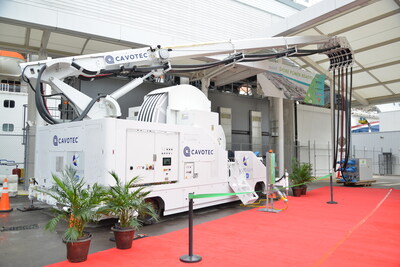
Cruise lines and ports are banking on shore power. What does that mean?
Article via USA Today
Shore power has become a major focus of the cruise industry’s sustainability efforts.
Technology enabling ships to connect to landside electrical power has been added to many new and existing vessels in recent years. PortMiami, the world’s busiest cruise port, launched shore power in mid-June, with Carnival Cruise Line’s Carnival Conquest being the first ship to plug in there.
The Port of Seattle also announced earlier last month that all cruise ships homeported in the city must have and use shore power capability by 2027. While shore power can help ships reduce pollution, it’s not always as clean as it may seem.
Here’s what to know.
What is shore power?
Shore power allows cruise ships to run on the electrical grid on land while docked, rather than running their own engines to produce electricity.
When cruise ships use shore power, they can switch off their engines, which reduces the local air pollution caused by exhaust emissions.
Most modern cruise ships have diesel-electric propulsion, using large engines to turn electric generators, according to Matthew Collette, a professor of naval architecture and marine engineering at the University of Michigan.
Some of the power goes toward spinning propellers to move a ship through the water, but a large percentage – sometimes more than half – is used for lighting, air conditioning and other features for passenger comfort. The latter stay on while ships are in port.
“So, there needs to be the provision of a large amount of power, and it either has to be generated on board by the ship, or we can take it from the shore power grid,” he said.
How many cruise ships can use shore power?
The number of cruise ships able to connect to onshore power among member lines of the Cruise Lines International Association – the industry’s leading trade organization – has increased more than twofold over the past five years.
“Today 120 ships are equipped to connect to shoreside electricity,” a cruise line association spokesperson told USA TODAY in an emailed statement following the Port of Seattle’s announcement. “By 2028, more than 210 ships will be sailing (with) the ability to plug in at port – representing 72% of all CLIA-cruise line member ships.”
But just because a ship can connect doesn’t mean a port has the capability. Less than 3% of ports worldwide currently offer onshore power.
“The industry will continue to work with its port partners as they evolve their shoreside sustainability offerings,” the spokesperson added. Collette said the technology can be a substantial undertaking.
“A cruise ship could be running five, 10, maybe even sometimes 20 megawatts of power in shore, so it’s not a small load,” he said. “So you need to have the infrastructure to get the power to the pier, which is an investment from the port side, and your power grid has to have the ability to take on this extra load.”
The cruise lines association maintains a map of ports that have at least one cruise berth with Onshore Power Supply, and passengers can contact cruise lines to inquire about their fleets’ capabilities.
Is shore power better for the environment?
It’s complicated. Shore power allows cruise ships – which primarily use diesel fuel – to turn off their engines, eliminating the local air pollution they would be generating through exhaust.
“Locally, probably always, yes,” said Collette. “For the people who are living and working around the port, getting rid of that point pollution coming out of the ship is a good thing.”
On a global scale, the question is whether the energy a ship gets from shore is lower carbon than what it was generating on board. That depends a lot on the power grid it plugs into.
Norway, for instance, uses hydropower for much of its energy production. “So, that’s a case where if you plugged into the Norwegian grid, you’re probably doing really well in terms of reducing the global carbon dioxide emissions, as well as the local emissions around the ship,” he said.
Plugging into a grid that uses coal power, however, doesn’t necessarily reap the same benefits in the aggregate. That said, Collette noted that shore power is not a gimmick.
“There’s some things you see out there where you’re like, ‘That’s just there for marketing.’ This is one where there’s real local air quality improvements when you use shore power. In places like Norway and as the grids get greener, there will be carbon reductions by doing this.”
